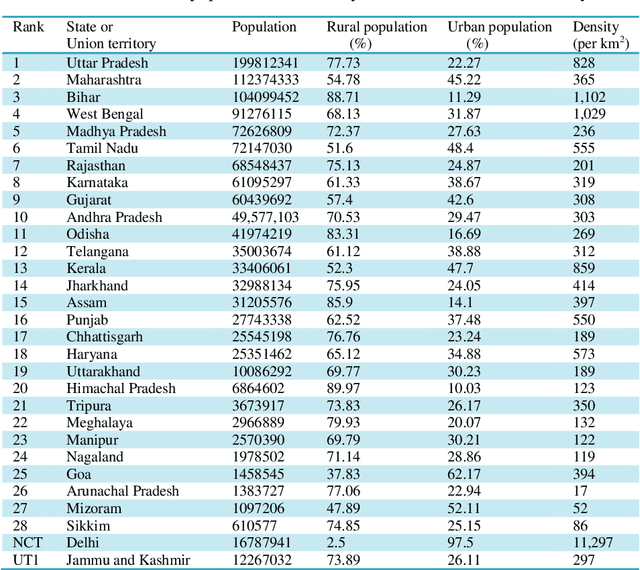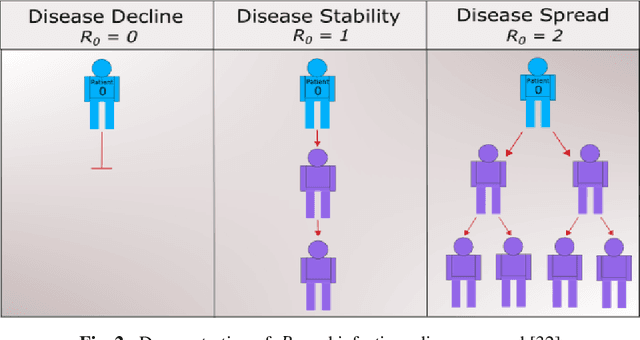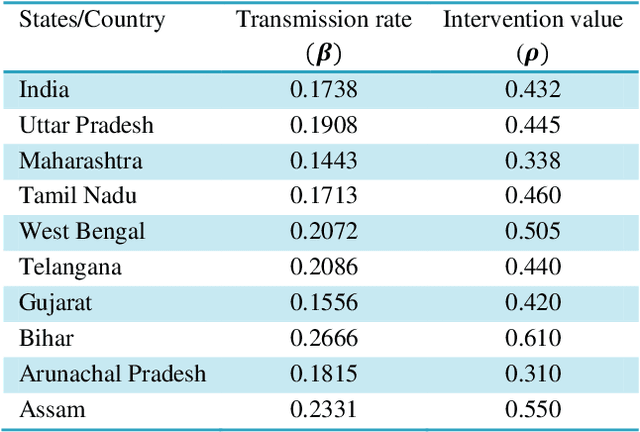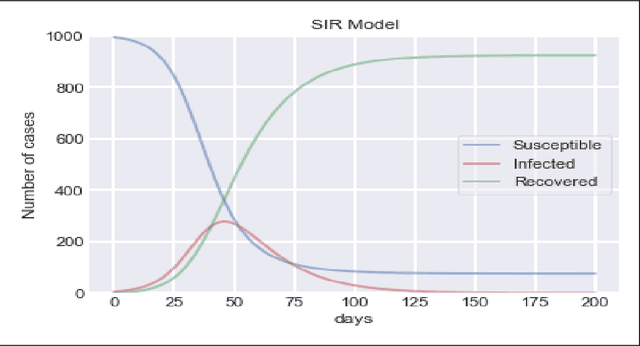Utkarsh Niranjan
Analysis of COVID-19 cases in India through Machine Learning: A Study of Intervention
Aug 17, 2020



Abstract:To combat the coronavirus disease 2019 (COVID-19) pandemic, the world has vaccination, plasma therapy, herd immunity, and epidemiological interventions as few possible options. The COVID-19 vaccine development is underway and it may take a significant amount of time to develop the vaccine and after development, it will take time to vaccinate the entire population, and plasma therapy has some limitations. Herd immunity can be a plausible option to fight COVID-19 for small countries. But for a country with huge population like India, herd immunity is not a plausible option, because to acquire herd immunity approximately 67% of the population has to be recovered from COVID-19 infection, which will put an extra burden on medical system of the country and will result in a huge loss of human life. Thus epidemiological interventions (complete lockdown, partial lockdown, quarantine, isolation, social distancing, etc.) are some suitable strategies in India to slow down the COVID-19 spread until the vaccine development. In this work, we have suggested the SIR model with intervention, which incorporates the epidemiological interventions in the classical SIR model. To model the effect of the interventions, we have introduced \r{ho} as the intervention parameter. \r{ho} is a cumulative quantity which covers all type of intervention. We have also discussed the supervised machine learning approach to estimate the transmission rate (\b{eta}) for the SIR model with intervention from the prevalence of COVID-19 data in India and some states of India. To validate our model, we present a comparison between the actual and model-predicted number of COVID-19 cases. Using our model, we also present predicted numbers of active and recovered COVID-19 cases till Sept 30, 2020, for entire India and some states of India and also estimate the 95% and 99% confidence interval for the predicted cases.
 Add to Chrome
Add to Chrome Add to Firefox
Add to Firefox Add to Edge
Add to Edge